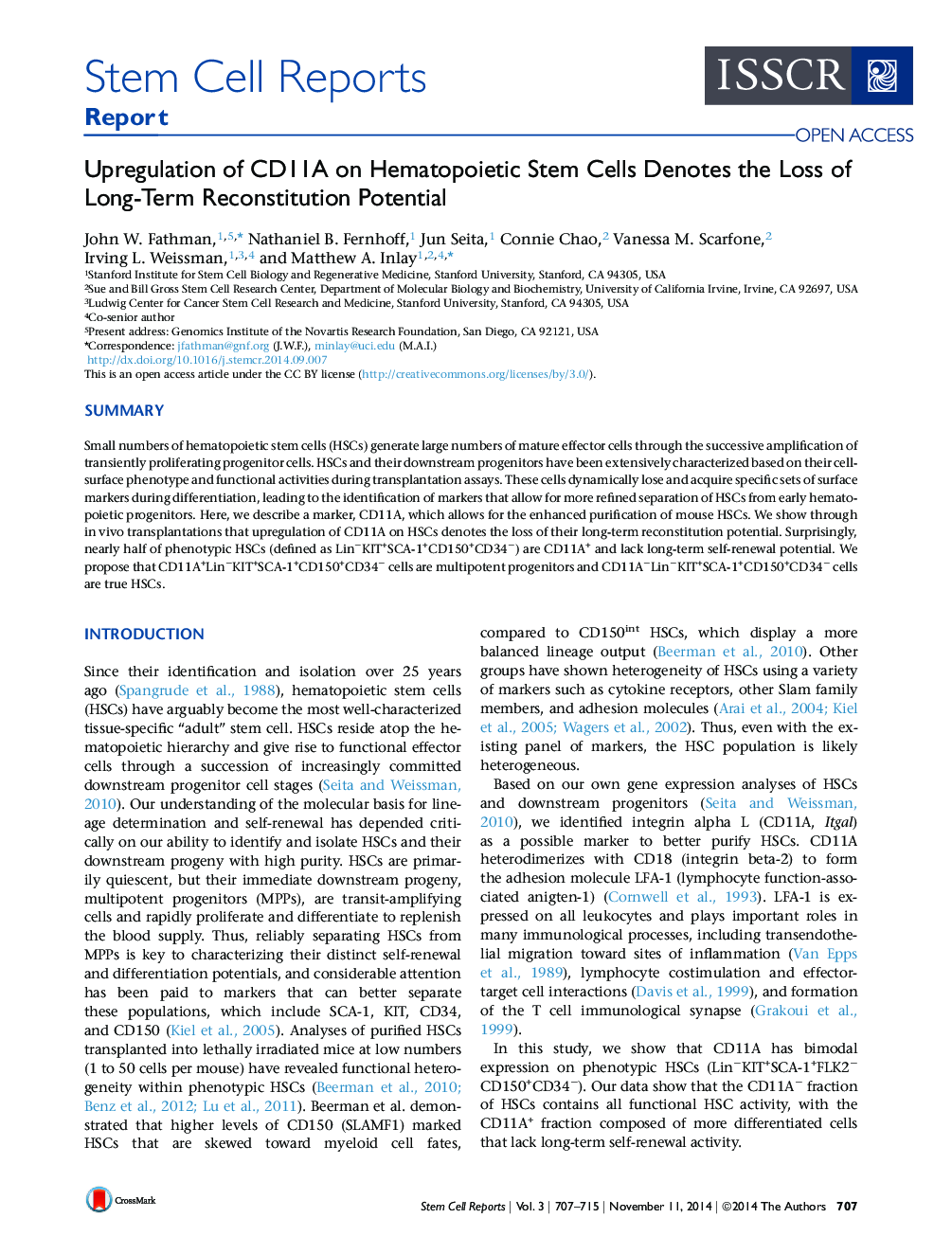| کد مقاله | کد نشریه | سال انتشار | مقاله انگلیسی | نسخه تمام متن |
|---|---|---|---|---|
| 2093321 | 1081953 | 2014 | 9 صفحه PDF | دانلود رایگان |

• CD11A separates phenotypic HSCs (Lin−KIT+SCA-1+CD150+CD34−) into two fractions
• All long-term reconstitution activity is within the CD11A− fraction of bone marrow
• CD11A blocking antibodies do not affect BM homing or long-term engraftment of HSCs
SummarySmall numbers of hematopoietic stem cells (HSCs) generate large numbers of mature effector cells through the successive amplification of transiently proliferating progenitor cells. HSCs and their downstream progenitors have been extensively characterized based on their cell-surface phenotype and functional activities during transplantation assays. These cells dynamically lose and acquire specific sets of surface markers during differentiation, leading to the identification of markers that allow for more refined separation of HSCs from early hematopoietic progenitors. Here, we describe a marker, CD11A, which allows for the enhanced purification of mouse HSCs. We show through in vivo transplantations that upregulation of CD11A on HSCs denotes the loss of their long-term reconstitution potential. Surprisingly, nearly half of phenotypic HSCs (defined as Lin−KIT+SCA-1+CD150+CD34−) are CD11A+ and lack long-term self-renewal potential. We propose that CD11A+Lin−KIT+SCA-1+CD150+CD34− cells are multipotent progenitors and CD11A−Lin−KIT+SCA-1+CD150+CD34− cells are true HSCs.
Journal: - Volume 3, Issue 5, 11 November 2014, Pages 707–715